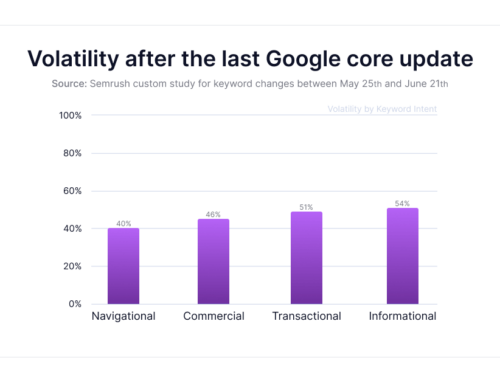In using ChatGPT, there are several challenges that one may encounter. As an advanced language model developed by OpenAI, ChatGPT has shown remarkable capabilities in generating human-like responses through conversational interactions. However, it also faces certain limitations, such as difficulties in consistently producing accurate and reliable information, generating biased or inappropriate content, and sometimes lacking the ability to ask clarifying questions to users. Addressing these challenges is crucial for leveraging ChatGPT effectively while minimizing potential drawbacks and ensuring a safe and reliable user experience.
Understanding user intent
Misinterpretation of user queries
One of the key challenges in using ChatGPT is the potential for misinterpreting user queries. ChatGPT is trained on a vast dataset, but it may not always accurately understand the meaning or intent behind a user’s question. This can lead to incorrect or irrelevant responses, resulting in frustration for the user.
Lack of context
Another challenge is the lack of context provided by the users. ChatGPT relies solely on the given input to generate responses. Without sufficient context, it becomes difficult for the model to fully understand the user’s request or provide an appropriate response. This limitation can often result in generic or nonsensical answers.
Ambiguity in user input
Ambiguity in user input poses yet another challenge for ChatGPT. Users may ask questions with ambiguous or vague wording, making it difficult for the model to determine the intended meaning. The lack of clarity can lead to confusion and inaccurate responses, detracting from the user experience.
Generating coherent responses
Inconsistent or contradictory responses
ChatGPT’s responses may sometimes be inconsistent or contradictory. This can happen because the model was trained on a diverse dataset of internet text, which can contain conflicting information. As a result, ChatGPT may generate answers that are inconsistent or contradictory, creating confusion for users.
Incorrect or nonsensical answers
Due to the limitations of training data and the model’s ability to generalize, ChatGPT may occasionally generate incorrect or nonsensical answers. It may provide inaccurate information or make illogical statements, which can mislead users and undermine the reliability of the responses.
Lack of response relevancy
ChatGPT may struggle with providing relevant responses based on the user’s query. Despite having a vast knowledge base, the model may not always accurately relate the input to the appropriate information. This can lead to responses that are tangentially related or entirely unrelated to the user’s original question.
Inappropriate or biased output
Insensitive/offensive language
A significant ethical concern when using ChatGPT is the potential for the model to generate responses that contain insensitive or offensive language. Due to its training on a wide range of internet text, ChatGPT may inadvertently produce outputs that are derogatory or harmful towards certain individuals or groups, causing distress and perpetuating negative stereotypes.
Promoting harmful or unethical behavior
Another challenge is ensuring that ChatGPT does not promote harmful or unethical behavior. Since the model learns from various sources, it may occasionally provide suggestions or guidance that goes against ethical norms and values, inadvertently promoting activities such as violence, substance abuse, or other harmful actions.
Reinforcing societal biases
ChatGPT can also reinforce societal biases present in its training data. If the data used for training contains biases related to gender, race, or other protected characteristics, ChatGPT may unknowingly perpetuate these biases in its responses. This reinforces systemic inequalities and discriminates against certain individuals or groups.
Handling sensitive information
Privacy concerns
When using ChatGPT, ensuring the privacy of user’s personal information is crucial. ChatGPT may inadvertently collect and store user data, posing privacy concerns. Measures must be taken to safeguard user information and ensure compliance with privacy regulations to maintain user trust.
Data security risks
The reliance on data in machine learning models like ChatGPT exposes it to potential data security risks. If malicious actors gain access to the chat system, they may exploit vulnerabilities to extract sensitive information or manipulate the model to produce harmful outcomes. Implementing robust security measures is essential to mitigate these risks.
Inadvertent disclosure of personal or confidential details
ChatGPT must be cautious about inadvertently disclosing personal or confidential information in its responses. Users may unknowingly provide sensitive details in their queries, and ChatGPT must be trained and designed to recognize and handle such information securely and responsibly.
Gaming and manipulation
Attempts to exploit the model’s limitations
Adversarial users may attempt to exploit ChatGPT’s limitations by intentionally providing misleading or ambiguous input to confuse the model or produce undesirable outcomes. These attempts can be challenging to address, as ChatGPT may struggle to recognize and overcome such manipulations effectively.
Creating misleading or harmful outcomes
There is a risk of users intentionally using ChatGPT to generate misleading or harmful content. The model could be used to spread false information, manipulate public opinion, or create malicious outcomes. This misuse highlights the importance of implementing measures to detect and prevent harmful content generation.
Generating spam or malicious content
ChatGPT can be vulnerable to generating spam or malicious content if not properly guided. Without adequate preventive measures, the model may produce outputs that contain spam links, phishing attempts, or other forms of malicious content. Addressing this challenge requires robust filtering and security mechanisms.
Lack of ethical decision-making
Difficulty in distinguishing right from wrong
ChatGPT lacks the ability to make ethical judgments, which can result in challenges when dealing with morally ambiguous or controversial topics. The model is limited to providing responses based on the information it has learned, without the capacity to evaluate the ethical implications of its answers.
Inability to prioritize user safety
ChatGPT may prioritize generating responses that are factually correct rather than considering the potential harm or safety risks associated with those responses. Ensuring user safety requires implementing mechanisms that consider and weigh potential consequences before generating a response.
Potential for unintended consequences
The complexity of language and user interactions means there is always a risk of unintended consequences in the responses generated by ChatGPT. Misunderstandings or misinterpretations can lead to unforeseen outcomes that may have unintended negative effects. Close monitoring and iterative improvements are necessary to minimize these risks.
Limited domain knowledge
Struggles with domain-specific queries
ChatGPT’s lack of domain-specific knowledge can pose challenges when users ask highly specialized questions. The model’s training data may not cover all domains comprehensively, resulting in limited or inaccurate responses to queries that require specific expertise.
Lack of specialized vocabulary
ChatGPT may also struggle with queries using specialized vocabulary or jargon associated with particular fields. Since the model’s training data consists of general internet text, it may not have been exposed to sufficient specialized terminology. This limitation can hinder its ability to provide accurate or meaningful responses in specific domains.
Unreliable information in specific fields
While ChatGPT can provide a wealth of information on various topics, users should be cautious when seeking advice or information in highly specialized fields. The model’s output in such cases may not always be reliable or backed by authoritative sources, potentially leading to misinformation or inaccuracies.
Dependency on user instructions
Inadequate guidance from users
ChatGPT relies on clear and explicit instructions from users to generate accurate responses. However, users may not always provide detailed or specific instructions, resulting in potential misunderstandings or the model producing irrelevant outputs. Enhancing the model’s ability to solicit and clarify user intent can help address this challenge.
Overreliance on implicit instructions
Conversely, ChatGPT may rely heavily on implicit instructions from users, assuming context that may not be present or accurate. This overreliance can lead to confusions and incorrect responses. Striking the right balance between explicit and implicit instructions is crucial in enabling ChatGPT to interpret and respond accurately.
Dependency on explicit instructions for optimal performance
To optimize ChatGPT’s performance, users often need to provide explicit instructions. The model’s inherent limitations require clear cues and guidance to generate desired outputs. This reliance on explicit instructions can place a burden on users, necessitating efforts to improve the model’s ability to understand and interpret more nuanced and indirect queries.
Training biases and limitations
Inclusion of biased or unrepresentative training data
One of the significant challenges in training ChatGPT is the potential inclusion of biased or unrepresentative training data. If the training data is skewed or contains systemic biases, it can influence the model’s responses, further perpetuating societal biases and inequalities. Ensuring diverse and balanced training data is crucial to mitigate this challenge.
Difficulty in removing or reducing biased behavior
Mitigating biases in ChatGPT can be challenging due to the complex nature of language and the myriad ways biases can manifest. Addressing biases requires ongoing research and development to develop techniques that can effectively identify, understand, and mitigate biases in the model’s responses.
Challenge in improving performance across multiple demographics
ChatGPT may exhibit performance disparities across different demographics, potentially amplifying existing societal inequities. Improving performance and reducing bias across various demographics require continuous evaluation, targeted improvements, and a commitment to inclusivity in the training and development processes.
Overcoming ethical challenges
Implementing responsible AI practices
To overcome the ethical challenges associated with ChatGPT, implementing responsible AI practices is crucial. This involves adhering to ethical guidelines, regularly evaluating and addressing biases and limitations, engaging with diverse input from users and stakeholders, and ensuring transparency and accountability in the model’s design and deployment.
Enhancing transparency and accountability
Transparency and accountability are essential in maintaining user trust and addressing ethical concerns. Making the decision-making process of ChatGPT more transparent, including disclosing the limitations of the model, its training data sources, and potential biases, can help users understand and assess the reliability of the system’s responses.
Developing robust bias mitigation techniques
The development of robust bias mitigation techniques is critical in addressing biases in ChatGPT’s responses. This involves ongoing research, collaboration with experts, and the exploration of various strategies such as pre-training with debiased data, fine-tuning with inclusively annotated data, and adversarial testing. The focus should be on creating models that are fair, accurate, and unbiased across various domains and demographics.
In conclusion, using ChatGPT presents several challenges related to understanding user intent, generating coherent responses, handling sensitive information, avoiding inappropriate or biased output, addressing gaming and manipulation, ensuring ethical decision-making, coping with limited domain knowledge, managing dependency on user instructions, and training biases. Overcoming these challenges requires responsible AI practices, transparency, accountability, and the continuous development of bias mitigation techniques. By effectively addressing these challenges, ChatGPT can offer improved user experiences and contribute to a more inclusive and reliable AI system.








Leave A Comment